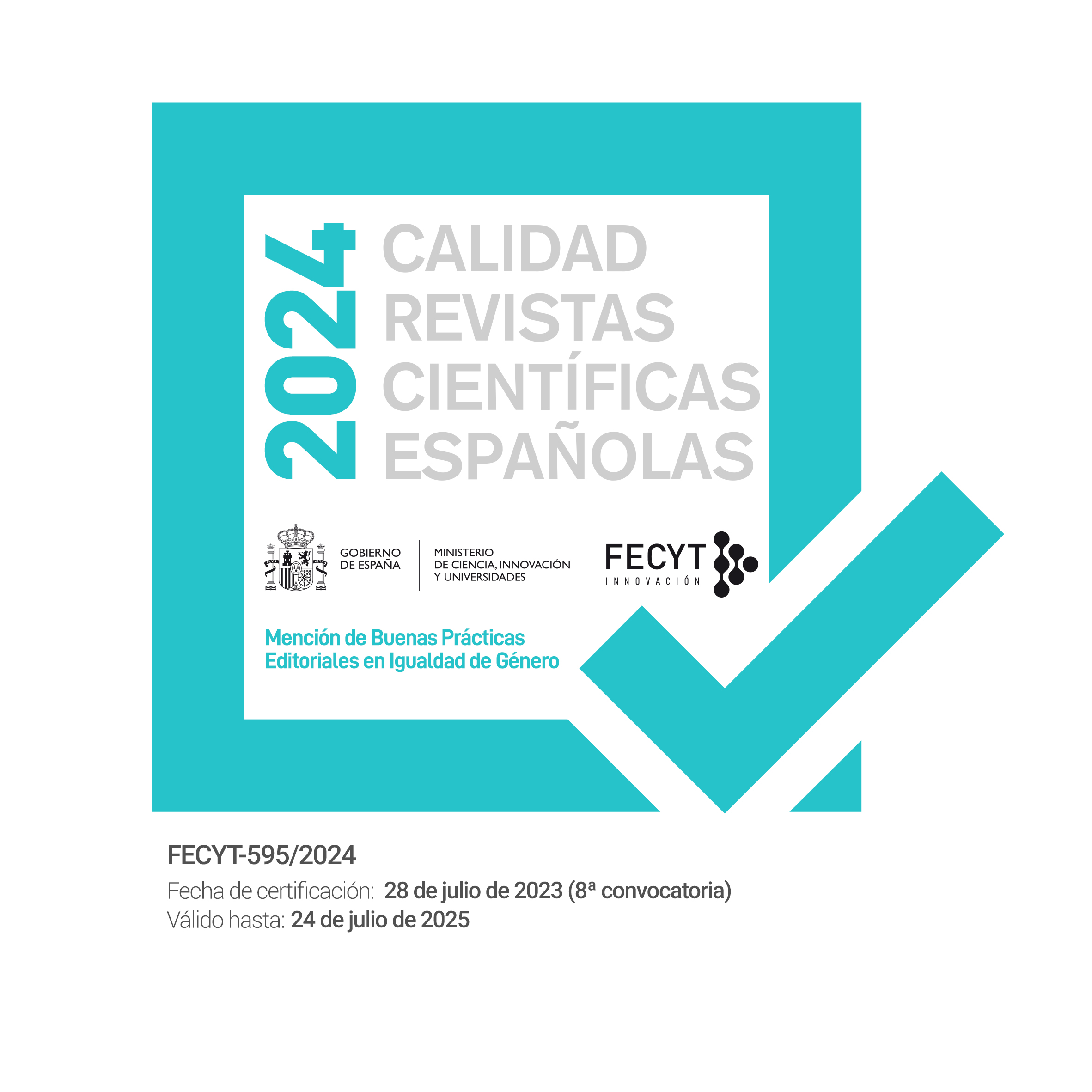An approach to the etiology of gender inequality
DOI:
https://doi.org/10.15257/ehquidad.2018.0006Keywords:
Gender, Inequality, Biology, Culture and ValuesAbstract
Gender equality seen from the perspective of gender differences, which is involved in its origin by the phylogeny and ontogeny of both sexes and its relation to the acquisition of values and the development of the formal and informal educational scaffolding of the individual throughout his life. The existence of unequal behavior between the sexes may be due, according to this study, to a misperception of gender equality by education developed at different stages of a person's life. Reflecting the work presented in the study through three dimensions: biological, normative and cultural.Downloads
References
Arendt, H. (2005). Sobre la violencia. Madrid: Alianza Editorial.
Bandura, A. (1973). Aggression. A social learning análisis. New Jersey: Prentice Hall.
Bauman, S. (2008). Amor Líquido. Acerca de la fragilidad de los vínculos humanos. Madrid: Fondo de cultura económica.
Bem, S. (1974). The measurement of psychological androgymy. Journal of Consulting and Clinical Psychology, 42. 155-162.
Bosch, E., Ferrer, V.A., y Alzamora, A. (2006). El laberinto patriarcal. Barcelona: Antrophos.
Cagigal, J. M. (1976). Deporte y agresión. Barcelona: Planeta.
Ciarrochi, J. V., Chan, A. C., & Caputi, P. (2000). A critical evaluation of the emotional intelligence construct. Personality and Individual Differences, 28 (3), 539-561. doi: 10.1016/S0191-8869(00)00108-2
Constitución Española, (1978). Disponible en:http://noticias.juridicas.com/
base_datos/Admin/constitucion.tp.html.
Dawda, D., & Hart, S. D. (2000). Assessing emotional intelligence: Reliability and validity of the Bar-On Emotional Quotient Inventory (EQ-i) in university students. Personality and individual differences, 28(4), 797-812.
De Beauvoir, S. (1981). El segundo sexo (1949). Buenos Aires: Siglo XX.
Expósito, F., y Moya, M. (2005). Violencia de género. En F. Expósito y M. Moya (Coords.), Aplicando la psicología social, (pp. 201-227). Madrid: Pirámide.
Galtung, J. (2003). Teoría del conflicto. Revista Paz y conflictos, 1(2), 60-81.
García Gómez, L. A., Mendoza Menéndez, C.G., Olivares Arizavalo, K., García Pacheco, M., y García Montañez, M. V. (2015) Descripción de funciones neuropsicológicas y de inteligencia en chicos en conflicto con la ley relacionados con bullying Revista Intercontinental de Psicología y Educación 17 (Julio-Diciembre): [Fecha de consulta: 1 de octubre de 2017] Disponible en:<http://www.redalyc.org/articulo.oa?id=80247939003> ISSN 0187-7690
Gartzia, L., Aritzeta, A., Balluerka, N., & Barberá, E. (2012). Inteligencia emocional y género: más allá de las diferencias sexuales. Anales de psicología, 28(2).
Garrido Genovés, V. (2001). El psicópata: Un camaleón en la sociedad actual. Madrid: Cíentocuarenta.
INE (Instituto Nacional de Estadística). Disponible en: http://www.ine.es/
jaxi/Datos.htm?path=/t18/p420/p01/a2013/l0/&file=01001.px.
INE (Instituto Nacional de Estadística). Disponible en: http://www.ine.es/
dyngs/INEbase/es/operacion.htm?c=Estadistica_C&cid=1254736176866&menu=ultiDatos&idp=1254735573206.
INE (Instituto Nacional de Estadística). Disponible en:http://www.ine.es/
consul/serie.do?d=true&s=DCS128&c=2&.
Jiménez-Bautista, F. (2012). Conocer para comprender la violencia: origen, causas y realidad. Convergencia, 19(58), 13-52.
Lamas, M. (2013). El género: la construcción cultural de la diferencia sexual. México: Grupo Editorial Miguel Ángel Porrúa.
Larrauri, E. (2007). Criminología crítica y violencia de género. Madrid: Editorial Trotta.
Ley Orgánica 3/2007, de 22 de marzo, para la igualdad efectiva de mujeres y hombres. Publicado en: «BOE» núm. 71, de 23/03/2007. Entrada en vigor: 24/03/2007. Departamento: Jefatura del Estado. Referencia: BOE-A-2007-6115.
Ministerio de Sanidad, Servicios Sociales e Igualdad (2017). Datos estadísticos Campañas. Disponible: http://www.msssi.gob.es/campannas
/campanas17/haySalida016.htm
Pérez Arellano, E., Castañeda Ramírez, I. (2015), El impacto de los estilos parentales en la dinámica de bullying a nivel secundaria. Revista Intercontinental de Psicología y Educación, 17 (2), 77-101.
Periódico El confidencial: Emily Witt, en su libro Sexo Futuro' (Ed. Libros del Lince). Disponible en: https://www.elconfidencial.com/alma-corazon-vida/2017-03-28/emily-witt-sexo-futuro_1354359/
Oficina del Asesor Especial en Cuestiones de Género y Adelanto de la Mujer (OSAGI). Disponible en:http://www.un.org/womenwatch/osagi/Concepts
andefinitions.htm.
ONU, Carta de las Naciones Unidas (1945). Disponible en: http://www.un.org/es/sections/un-charter/chapter-iv/index.html.
Parsons, T., y Bales, R.F. (1955). Family, socialization, and interactions process. Clencoe Ill: Free Press.
Real Academia Española (1992), Diccionario de la lengua española, Madrid: Siglo XXI
Rojas Marcos, Luís (1995). Las semillas de la violencia. Madrid: Espasa Calpe.
Sánchez, J. (1986). Social crises and psychopathy: Toward a sociology of the psychopath. In WH Reid, D. Dorr, JI Walker & JW Bonner, III (Eds), Unmasking the psychopath: Antisocial personality and related syndromes (pp. 78-79). N.Y: Norton.
Sánchez Aragón, R., Retana Franco, B. E., y Carrasco Chávez, E. (2008). Evaluación psicológica del entendimiento emocional: Diferencias y similitudes entre hombres y mujeres. Revista Iberoamericana de Diagnóstico y Evaluación-e Avaliação Psicológica, 2(26), 196-216.
Sanmartín, P. G. (2017). Padres sin tiempo para transmitir valores. Ehquidad. Revista Internacional de Políticas de Bienestar y Trabajo Social, 8, 119-160. doi: 10.15257/ehquidad.2017.0011.
Scott, J., & Lamas, M. (1992). Igualdad versus diferencia: Los usos de la teoría postestructuralista. Debate Feminista, 5, 85-104.












